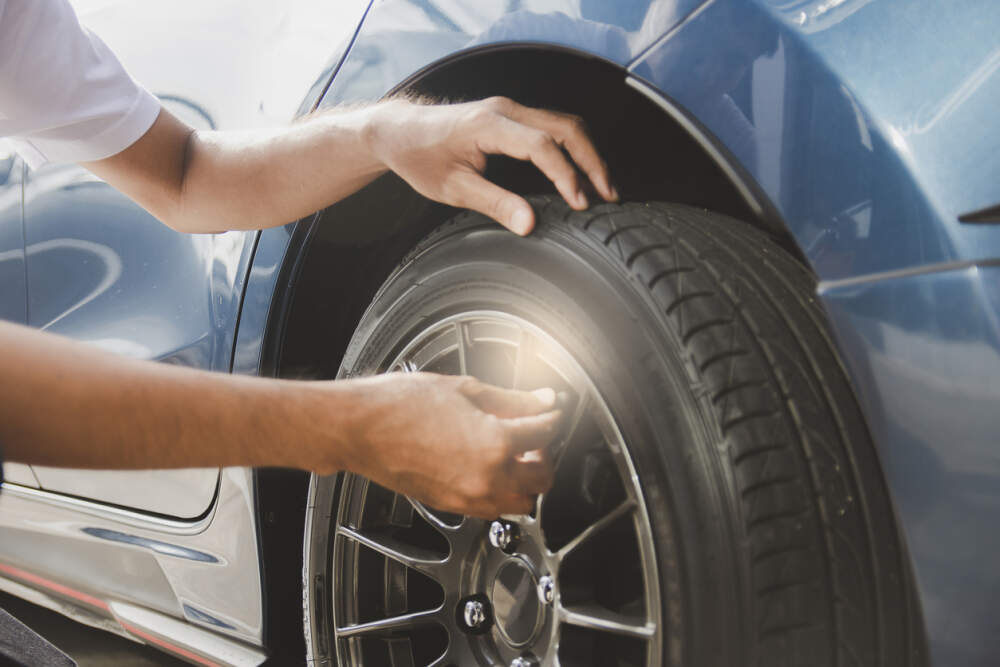When you’re cruising down the highway or navigating through winding roads, one crucial factor ensures your safety and control over your vehicle: tyre grip. This often overlooked aspect of driving plays a pivotal role in keeping you on the road, especially during adverse weather conditions or challenging terrains. That informative content is created by Top Car Removal Sydney.
What is tyre grip?
Tyre grip refers to the traction between the tyres and the road surface. It’s what allows your car to accelerate, brake, and corner effectively, translating your commands from the steering wheel and pedals into actual movement.
Importance of tyre grip in driving safety
The level of grip your tyres provide directly impacts your ability to maneuver safely. Insufficient grip can lead to skidding, loss of control, and potentially accidents. Thus, understanding the science behind tyre grip is crucial for every driver.
The Role of Tyres in Car Performance
Your car performance isn’t solely determined by its engine power or aerodynamics; tyres play a significant role too.
Impact of tyre technology on Car performance
Advancements in tyre technology have revolutionized car performance, enhancing handling, fuel efficiency, and safety. Modern tyres are the result of extensive research and development aimed at maximizing grip while minimizing wear.
Factors affecting tyre grip
Several factors influence tyre grip, including tread design, rubber compound, tyre pressure, and external conditions like temperature and road surface.
Understanding Tyre Traction
Tyre traction is closely related to grip and refers to the friction between the tyre and the road surface.
Definition of tyre traction
Tyre traction is the ability of a tyre to grip the road and resist slipping. It’s crucial for maintaining control during acceleration, braking, and cornering.
How tyre traction affects grip
Higher traction levels result in better grip, allowing for more responsive handling and improved safety. Factors such as tread pattern and rubber composition influence traction.
Types of Tyre Treads
The design of a tyre’s tread pattern significantly impacts its performance across different road conditions.
Explanation of different tread patterns
Tyres come in various tread designs, including symmetrical, asymmetrical, directional, and winter-specific patterns. Each design offers distinct advantages and disadvantages depending on the intended use.
Advantages and disadvantages of each type
Symmetrical treads provide balanced performance, while asymmetrical treads offer improved handling and stability. Directional treads excel in channeling water away from the tyre, enhancing wet weather grip, while winter-specific treads feature deep grooves for traction in snow and ice.
visit: https://fastlinkcarremoval.com.au/broken-car-removal/
Innovations in Tyre Composition
The materials used in tyre construction have evolved significantly over the years, contributing to improved grip and durability.
Evolution of tyre materials
From natural rubber to synthetic compounds, tyre manufacturers continually innovate to enhance performance and longevity. Modern tyres incorporate advanced materials like silica and carbon black for superior grip and tread wear resistance.
Influence of materials on grip and durability
The composition of tyre materials directly impacts grip levels on different surfaces and durability against wear and tear. By carefully selecting and blending materials, manufacturers optimize tyre performance for various driving conditions.
The Science Behind Rubber Compounds
Rubber compounds play a crucial role in determining a tyre’s grip and performance characteristics.
Role of rubber compounds in tyre grip
Rubber compounds provide the necessary friction between the tyre and the road surface, allowing for optimal grip and traction. The formulation of these compounds is tailored to specific driving conditions and performance requirements.
How compound composition affects traction on various surfaces
Soft compounds offer maximum grip but may wear out quickly, while harder compounds provide longevity but sacrifice some grip. By adjusting the ratio of ingredients, tyre engineers achieve the perfect balance between grip, durability, and performance across different surface conditions.
Tire Pressure and Grip
Proper tire pressure is essential for maintaining optimal grip and performance.
Importance of proper tire pressure
Under-inflated tires decrease grip and increase rolling resistance, affecting fuel efficiency and handling. Over-inflated tires reduce the contact patch with the road, compromising traction and ride comfort.
Effects of over-inflated and under-inflated tires on grip
Under-inflated tires have increased sidewall flex, reducing stability and increasing the risk of overheating and blowouts. Over-inflated tires are prone to uneven wear and reduced traction due to decreased contact with the road surface.
Temperature and Grip
Temperature plays a significant role in determining tyre grip levels.
Impact of temperature on tire performance
Extreme temperatures, both hot and cold, affect the compound’s elasticity and the tyre’s grip on the road. In cold conditions, rubber compounds harden, reducing grip, while in hot conditions, they soften, potentially leading to over-heating and reduced durability.
Optimal temperature range for maximum grip
Tyres perform best within a specific temperature range, typically between 40°F and 100°F (4°C to 38°C). Outside this range, grip levels may decrease, affecting handling and safety.
Wet Weather Performance
Driving in wet conditions poses unique challenges that require adequate grip for safety.
Challenges of driving in wet conditions
Wet roads reduce tyre traction due to the presence of water film, increasing the risk of hydroplaning and loss of control. To combat these challenges, tyre manufacturers develop technologies to enhance grip on wet surfaces.
Technologies improving grip on wet surfaces
Sipes, grooves, and silica compounds are among the features incorporated into tyre designs to improve wet weather performance. These technologies enhance water evacuation, maintain traction, and reduce the risk of hydroplaning.
Winter Tyres and Grip
Winter tyres are specifically designed to provide optimal grip and traction in cold and snowy conditions.
Features of winter tires for enhanced grip
Winter tyres feature deeper treads, softer rubber compounds, and specialized siping patterns to bite into snow and ice, providing better traction and control. These tyres are essential for safe driving in winter climates.
Benefits of using winter tires in cold climates
Winter tyres improve braking performance, cornering stability, and overall safety in icy and snowy conditions. Their enhanced grip allows for confident driving even in the harshest winter weather.
Testing and Rating Tyre Grip
Various methods are employed to assess the grip levels of tyres, helping consumers make informed decisions.
Methods used to test tyre grip
Wet and dry handling tests, braking distance measurements, and cornering evaluations are some of the techniques used to quantify tyre grip. These tests provide valuable insights into a tyre’s performance across different driving scenarios.
Understanding tyre traction ratings
Tyre manufacturers assign traction ratings based on test results, indicating how well a tyre grips the road under specific conditions. These ratings help consumers compare different tyre models and choose the most suitable option for their needs.
Future Trends in Tyre Technology
The future of tyre technology holds promising advancements aimed at further improving grip and performance.
Predictions for future advancements
Continued research into innovative materials, tread designs, and manufacturing techniques will drive future developments in tyre technology. Expect to see tyres with enhanced grip, durability, and eco-friendliness in the years to come.
Potential breakthroughs in improving tyre grip
Nanotechnology, 3D printing, and bio-inspired materials are areas of interest for tyre engineers seeking to push the boundaries of grip and performance. These breakthroughs could revolutionize the way we think about tyre technology.
Maintenance Tips for Maximizing Tyre Grip
Regular maintenance is essential for preserving tyre grip and ensuring optimal performance.
Importance of regular tyre maintenance
Proper inflation, alignment, rotation, and inspection are crucial for extending tyre life and maintaining consistent grip levels. Neglecting maintenance can lead to uneven wear, reduced traction, and safety hazards.
Tips for extending tyre life and maintaining optimal grip
Check tyre pressure regularly, rotate tyres according to manufacturer recommendations, and inspect for signs of wear and damage. Additionally, ensure proper wheel alignment and balance to maximize grip and performance.
Environmental Impact of Tyre Grip
While tyre grip is essential for safety and performance, it’s essential to consider its environmental implications.
Effects of tyre wear on the environment
As tyres wear down, they shed tiny rubber particles, known as microplastics, into the environment. These particles can contaminate soil and waterways, posing risks to ecosystems and wildlife.
Sustainable practices in tyre manufacturing
Tyre manufacturers are increasingly adopting sustainable practices to minimize environmental impact. This includes using recycled materials, reducing energy consumption, and developing eco-friendly disposal methods for worn-out tyres.
Conclusion
Tyre grip is a fundamental aspect of car safety and performance, influenced by various factors such as tread design, rubber compound, and external conditions. Understanding the science behind tyre grip empowers drivers to make informed decisions and prioritize safety on the road. As tyre technology continues to evolve, we can expect further advancements aimed at improving grip, durability, and sustainability.
FAQs (Frequently Asked Questions)
- How does tyre pressure affect grip?
- Tyre pressure directly impacts the size of the contact patch between the tyre and the road surface. Insufficient pressure decreases grip, while over-inflation reduces the contact area, affecting traction.
- Are winter tyres necessary for driving in cold climates?
- Winter tyres are highly recommended for driving in cold climates, especially in areas prone to snow and ice. They provide superior grip and traction compared to all-season tyres in winter conditions.
- What is the significance of tyre tread patterns?
- Tyre tread patterns play a crucial role in determining grip and performance across different road conditions. The design of the tread affects water evacuation, traction, and handling characteristics.
- How often should I check my tyre pressure?
- It’s advisable to check tyre pressure at least once a month or before long trips. Additionally, monitor tyre pressure whenever there are significant temperature fluctuations, as it can affect pressure levels.
- What are some signs that my tyres need replacement?
- Signs of worn-out tyres include uneven tread wear, cracks in the sidewall, vibration while driving, and decreased grip and handling. If you notice any of these symptoms, it’s time to replace your tyres.



